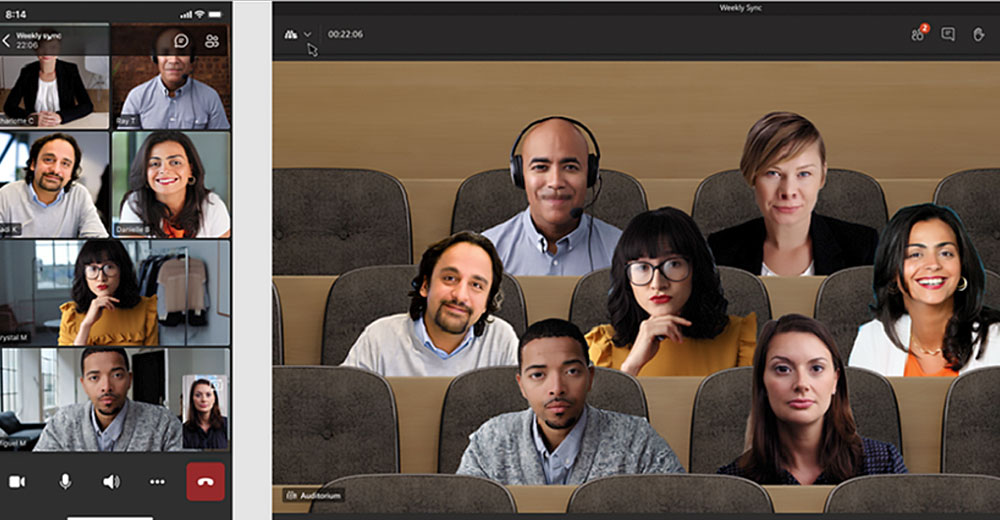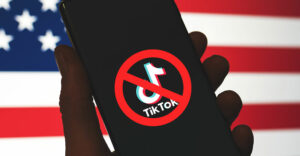Microsoft has announced a hands-on preview for the commercial customers of its new Teams Premium product designed to make meetings more personal, intelligent, and secure.
The premium product includes several slick features, such as:
- Use of artificial intelligence to provide live translation and intelligent recaps of meetings with autogenerated chapters and suggested action items and insights;
- Advanced protections with the use of watermarks, end-to-end encryption, and sensitivity labels to block copying and pasting of chat sessions;
- Tools for creating and managing high-quality webinars;
- A Virtual Appointment dashboard for controlling the virtual appointment experience from end-to-end; and
- Ability to extend a company’s image across meetings by branding backgrounds.
“This is an opportunity for Microsoft to open up monetization opportunities beyond Microsoft 365,” observed Ross Rubin, the principal analyst at Reticle Research, a consumer technology advisory firm in New York City.
“You’ll get a baseline level of functionality, but there’ll be more functionality at a higher price tier,” Rubin told TechNewsWorld.
Race for AI Solutions
The AI features do several things not done at meetings, such as provide outlines, notes, and translations for their audience, observed Rob Enderle, president and principal analyst at the Enderle Group, an advisory services firm in Bend, Ore.
“I expect this AI component will be the defining difference between platforms in the future,” he told TechNewsWorld. “The powerful conferencing solutions seem to be racing to see who can provide the most powerful AI-based solutions.”
Intelligent Recap holds a lot of promise for helping organizations get the most out of meetings, maintained J. P. Gownder, a vice president and principal analyst at Forrester Research, a national market research company.
“Too often, follow-ups and action items are forgotten after a meeting,” Gownder told TechNewsWorld. “People who missed the meeting struggle to find out the value of the meeting.”
“Intelligent Recap promises to automate the process of extracting follow-ups, action items, and the content of the meeting,” he continued. “It will take some time to learn from real-world meetings, but it promises to increase the value of meetings and link them to business actions.”
More Efficient Meetings
In some ways, the new tools in Teams Premium make virtual meetings more efficient than in-person meetings, noted Michael Inouye, a principal analyst at ABI Research, a global technology intelligence firm.
“By more efficient, I mean making accessing information from past meetings and managing follow-ups more streamlined and easier,” Inouye told TechNewsWorld.
He explained that in an in-person meeting, any work on a whiteboard might not make it into the meeting notes. Similarly, note-taking is often not shared between participants or could be idiosyncratic to an individual’s note-taking style.
“Creating chapters and tagging the recorded meetings makes searching through archives much more efficient,” he continued. “Rather than trying to recall the date a particular meeting took place by checking your notes, you could search for the topic of interest or other information.”
“These tools could also benefit in-person meetings as well, as those conversations could be recorded and processed in a similar manner, so it isn’t exclusive to virtual,” he added.
Features Too Good for Paywall
The new security features in Teams Premium have also attracted praise. “The security enhancements like copy/paste control and E2E encryption for groups are all excellent,” said Forrester analyst Will McKeon-White.
However, he did question confining the features to a premium offering. “It’s odd these are partitioned outside the standard Teams platform,” he told TechNewsWorld.
McKeon-White also had kudos for Teams Premium’s webinar addition. “The webinar offering is much needed from a competition standpoint and will help organizations further consolidate on one offering,” he said.
While lauding the product’s translation feature, he also lamented its limits. “Live translation is going to be transformative for how organizations communicate,” he predicted. “It’s a shame to see this shift inside a paywall.”
One feature of Teams Premium that seems to be drawing mixed reviews is its branding feature.
“I find the branding-focused features to be interesting and potentially differentiating versus solutions from Zoom and Cisco,” observed Mark N. Vena, president and principal analyst at SmartTech Research in San Jose, Calif.
“It appears that Microsoft is headed down a more personalized experience with the Premium version of Teams, which I think will be useful,” Vena told TechNewsWorld.
“The ability to create a more customized experience will be valued by some users, and I think the capability to add your brand will be valued by users who create video podcasts or conduct webinars,” he said.
Ahead of Its Time
While an interesting idea, the brand extension feature may be problematic, asserted Enderle. “Using a tool like this to advance a brand requires marketing to have a direct say in the result, which doesn’t appear to be the case here,” he said.
“It would be like providing a medical tool without medical oversight,” he explained. “I don’t think you can do a brand feature without embedding marketing deeply into the resulting process. That isn’t the case here.”
Branding isn’t typically prioritized in virtual types of communication and collaboration, added Inouye. “Further down the road, if virtual C&C becomes more immersive or more generally pervasive, then I could see this becoming more valuable,” he noted.
“This one may be a bit ahead of its time,” he continued. “No harm done, but it likely won’t be a key selling point.”
Inouye maintained that Teams Premium should help Microsoft’s standing in the communication and collaboration market. However, he added, ” It is hard to say if it will shift the competitive landscape in a meaningful way, at least not yet.”
“Companies have scaled back on virtual events, meaning a company may see less value from a more integrated solution,” he explained. “Going with a third party for a handful of events may be just as good of an alternative as the more integrated solution.”
Word of Caution
Vena contended that Microsoft is playing catch-up in the video conferencing space as Zoom became the market leader over the course of the pandemic, focusing on ease of use.
“But Zoom continues to have detractors over security concerns, and Microsoft has a perceived advantage when it comes to protecting privacy,” he said. “This new solution should move the ball forward in raising Teams’ appeal, particularly with enterprise and SMB users.”
McKeon-White added that all the enhancements are logical and value-adds for the Teams platform. “My biggest issue with the Microsoft approach here is partitioning them behind a paywall,” he observed.
“Any time AI/ML features are partitioned outside a platform, it provides an opening for competitors,” he said.
There is a lot to like in this rollout, as Microsoft continues to evolve its AI to deliver more valuable features, noted Wayne Kurtzman, research vice president for collaboration and communities at IDC, a global market research company.
However, he cautioned: “Microsoft will need to add more benefits to retain the Premium value, as some of their competitors are likely to include some of these features in their base product. This market, despite economic headwinds, is likely to retain a high velocity of feature innovation.”
























































